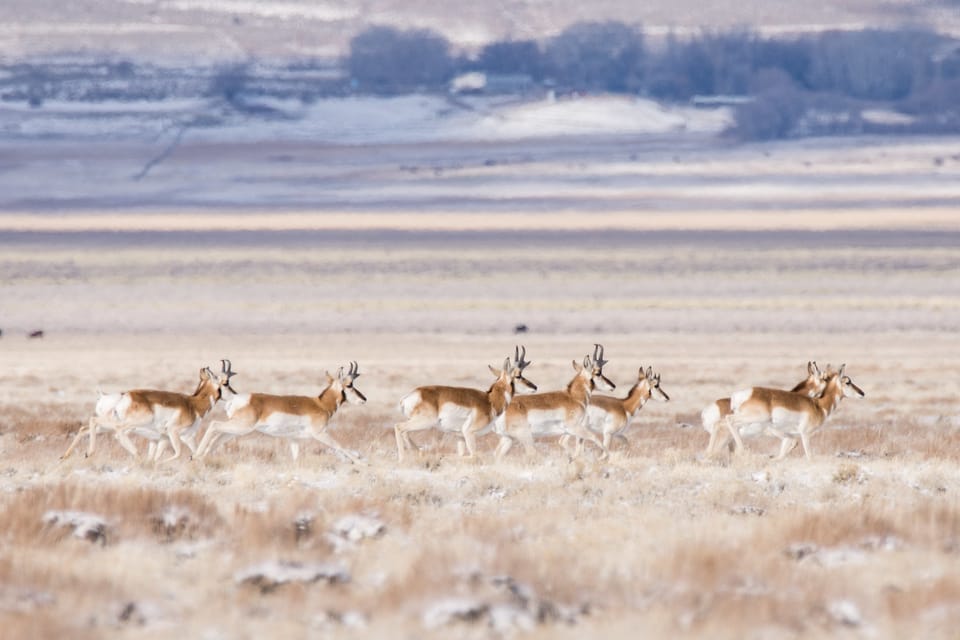EcoWest News, January 23, 2024

Welcome to EcoWest News, a weekly round-up of news and resources that you can put to use in addressing environmental issues and protecting the wild in your community.
Across the West
Two Saskatoon parks (Boughton and Leif Erickson) are being upgraded with food forest demonstration sites, tree plantings, pollinator gardens, and educational signage.
Four First Nations have secured interim protection for the Seal River Watershed, an area as large as Nova Scotia with no dams, mines, hydro lines, or permanent roads. [CPAWS MB, The Narwahl]
A Manitoba couple are enjoying the province’s first passive-certified home with its quiet comfort and low energy bills. [Global News]
The Oldman Watershed Council has prepared a 6-part video series on drought in southern Alberta, exploring its causes and impacts. The first 3 segments are now available. [Oldman Watershed]
Trout Unlimited Canada reconnected two streams in Alberta by replacing inadequate culverts, giving fish the space and resources they need. [Land Stewardship]
Bats play a huge role in healthy ecosystems. Fake trees could help them to survive. [The Narwhal]
Around the World
“Wales has become the first country in the world with a map of its most important areas for insects and other invertebrates.” The map is available online and explains why the areas are important, the threats they face, and what needs to be done to help them survive. [Little Green Space]
Using AI to protect the environment by detecting patterns and trends: an interview with Rainforest Connection about their use of soundscape data. [The Markup]
An architecture design firm views urban rewilding as “people forming relationships with other life forms and ecologies.” [Rewilding]
The global transition to clean energy may cost much less than reported as estimates fail to take into account the decrease in fossil fuel spending and the financial benefits of limiting the damage caused by climate change to public health and infrastructure. [Inside Climate News]
Reporting Back
Two new reports look at the advantages of improving the built environment’s energy efficiency in both driving down emissions and protecting residents from extreme weather events.
Building Value by Decarbonizing the Built Environment lists 17 areas that look particularly promising. They include industrializing green materials construction and electrifying construction. [McKinsey]
Pembina Institute recommends deep retrofits that go beyond renovations to incorporate building systems and equipment. [Pembina]
Both reports emphasize the need to support innovative solutions. One strategy that is already being implemented on a municipal level is deconstruction, but to be successful it requires training and differentiating between reuse and recycling. [Grist]
Making a Difference
Increased demand for deliveries is projected to drive up emissions by 32%. Some US cities are looking at ways to minimize the problem: using their rivers, creating a zero-emission delivery zone, and bike lane improvements to promote cargo e-bikes. [Smart Cities Dive]
More than 6 out of 10 Parisians are in favour of increasing parking charges for large, heavy, and more polluting vehicles. [Clean Cities Campaign]
DIY
Intact Centre on Climate Adaptation offers several online resources to assist you in protecting your home and business from wildfire, flood, and extreme heat. [Intact]
Showing respect for wildlife: tips on how to practise ethical wildlife photography. [Canadian Geographic]
Nature’s Wonders
Most of the results are in for the Christmas Bird Count. Saskatchewan reported very few owls, but American Goldfinch now regularly overwinter in Saskatchewan, with 45 reported as far north as Prince Albert. 5 species were found on every Manitoba bird count: Downy Woodpecker, Hairy Woodpecker, Blue Jay, Common Raven, and Black-capped Chickadee. British Columbia reported a decrease in the number of owls, but there were high numbers of Western Bluebirds in the Okanagan. Calgary birders counted almost 36,000 birds, less than usual, which they believe was related to the low numbers of Canada Goose, Mallard, and Bohemian Waxwing.
Photo credit: https://www.flickr.com/photos/apmckinlay/33181038385
EcoFriendly West informs and encourages initiatives that support Western Canada’s natural environment through its online publication and the Nature Companion website/app. Like us on Facebook, follow us on Twitter or Mastodon, or subscribe by email.

Member discussion